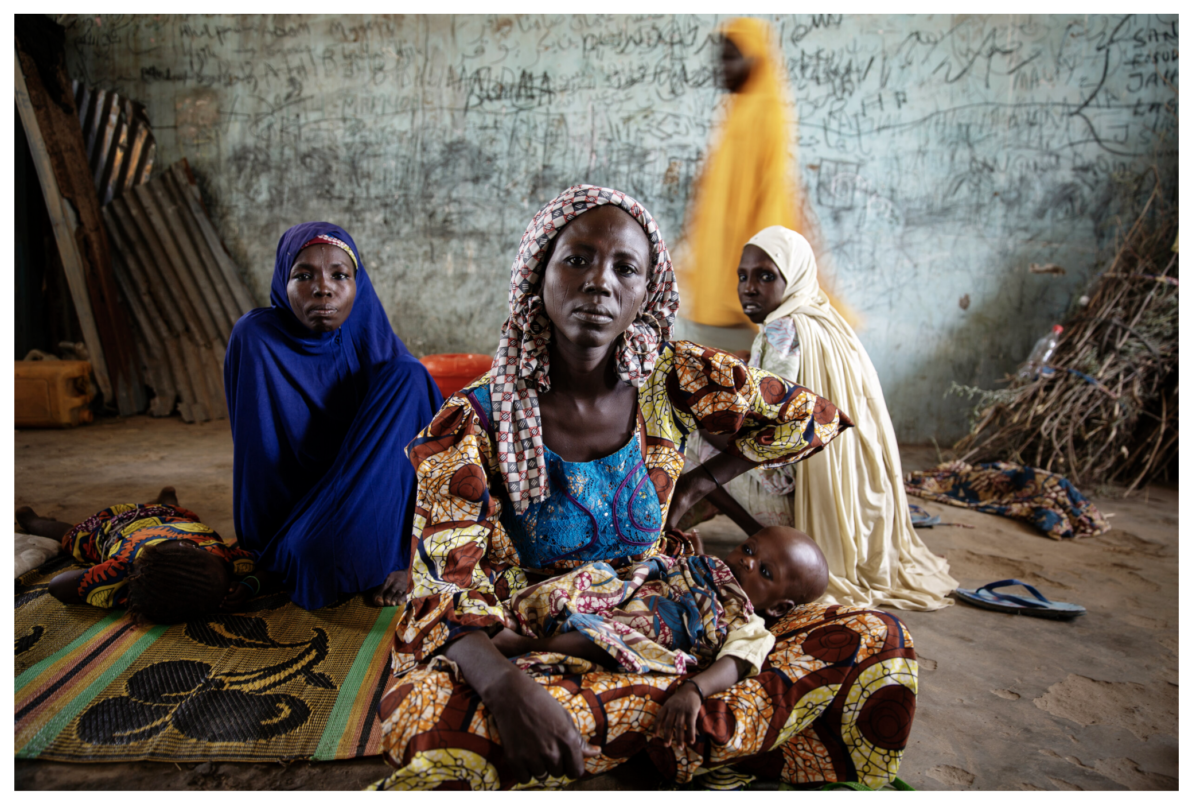
https://www.malinfezehai.net/projects/displaced
The photograph I chose for the assignment was taken by an Eritrean-Swedish artist Malin Fezehai. It is a part of her collection named “Displaced” that covers stories of people who were forced to flee their homes due to wars, food insecurity, climate change, and other triggering factors.
It pictures Attah Modu, an IDP (internally displaced person) living in a camp in the border town of Ngala, Nigeria, with her child in the foreground and other women and a kid in the background. Attah had to leave her village after multiple attacks by Boko Haram (a terrorist organization based in northeastern Nigeria, which is also active in Chad, Niger, and northern Cameroon). She remembers feeling unsafe at her home and losing neighbors and friends to daily violence.
In this photograph, Fezehai tries to create a visual representation of the people who are weathering through crises and tough circumstances of Boko Haram’s insurgency, showing the effects of women’s past on their current life. When you take a look at the image, you can feel the heaviness that lies on these women’s shoulders after everything they have been through. I chose this photograph because I was lured in by its composition and use of color. Attah’s pose also reminded me of the Renaissance-era Madonnas.
There are a few formal elements used in this photo: symmetry, diagonal lines, and leading lines.
The element of symmetry in the photograph is pronounced both through the portrayal of the women sitting behind Attah, and the metal/wooden scrap and branches leaning on the wall. The scrap also acts as a representation of diagonal lines, as they reach the opposite corners of the photo, as well as leading lines, as they point at the women sitting on the floor. One can also argue that they are creating a frame within a frame, too, pointing the viewer’s attention not only to the faces of the sitting women, but to the shadowy figure of the woman in yellow, and the wall behind them that is covered in scribbles.
The contrast of women and their children with the background accentuates the unsettling feeling of being displaced. It shows the difference between the warmth of the community vs. the makeshift and temporary “home” they have to settle in.




Recent Comments